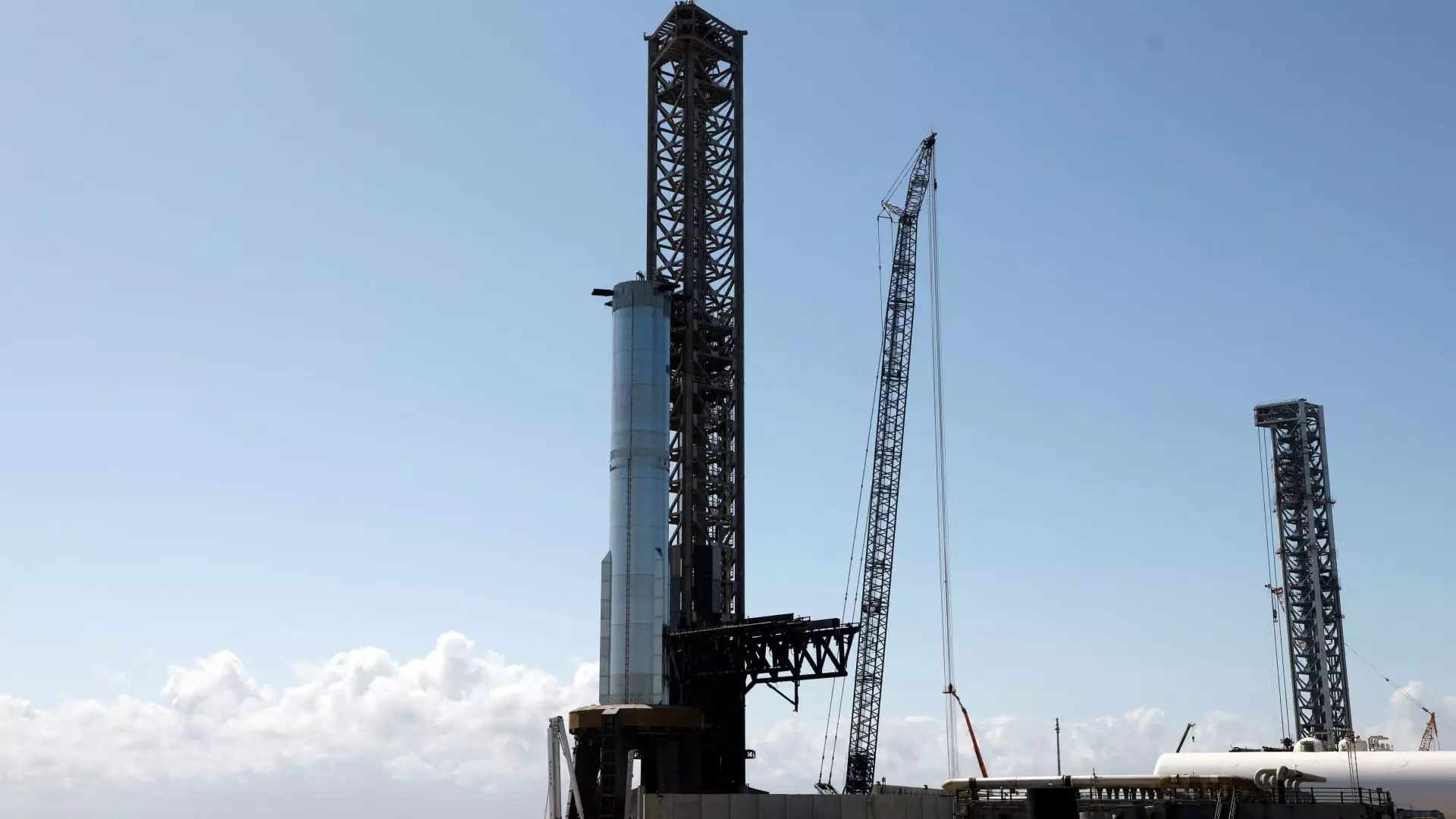In a notable development, SpaceX, the aerospace company founded by Elon Musk, has received approval from the Federal Aviation Administration (FAA) to resume flight tests of its Starship rocket. This announcement, which came late last week, marks a significant step in the ambitious quest to enhance space travel and exploration, a venture that Musk has fervently championed. However, behind this progress lies a series of critical incidents and regulatory challenges that shadow the company’s path forward.
Just months ago, during its seventh test flight in January, the Starship rocket experienced a catastrophic failure, resulting in an explosion that scattered debris over the Caribbean islands of Turks and Caicos. The fallout from this mishap was extensive, as commercial flights in the vicinity faced diversions and delays, drawing considerable media and public scrutiny. This recent FAA authorization has stirred discussions, particularly since it has been granted even before the completion of the investigation into the January incident.
The FAA has historically been cautious when granting permission for test flights, especially after incidents that raise safety concerns. SpaceX, with a staggering private market valuation of $350 billion, continues to leverage its substantial influence and resources to advance its projects despite previously being cited for serious safety violations. The FAA imposed a civil penalty exceeding $600,000 on SpaceX for alleged infractions related to two launches in 2023, indicating a pattern of regulatory challenges for the company. Furthermore, the Environmental Protection Agency (EPA) held SpaceX accountable for environmental transgressions, enforcing sanctions for practices that polluted Texas waters.
Musk’s response to these regulatory actions has been defiant. He publicly criticized the FAA, even threatening legal action over what he characterized as “regulatory overreach.” However, no legal complaints were filed, raising questions about the sincerity of his claims. This ongoing tension highlights a broader narrative about the complex relationship between innovative companies and regulatory frameworks designed to ensure public safety.
Elon Musk’s significant financial contributions to political campaigns, including nearly $300 million towards re-electing former President Donald Trump, have amplified the scrutiny surrounding his operations. His appointment to lead the so-called Department of Government Efficiency (DOGE) reflects a network of influence that many view as troubling. It allows Musk and former aides unprecedented visibility into federal systems and an influential role in shaping policies affecting his business interests.
This involvement has raised alarms among lawmakers, particularly senators such as Adam Schiff and Tammy Duckworth, who have called attention to potential conflicts of interest within the FAA. Their concerns underscore the delicate balance between fostering innovation in aerospace and ensuring that regulatory bodies operate impartially, free from undue influence.
Despite the turmoil, the Starship rocket itself represents a monumental achievement in aerospace engineering. Standing 403 feet tall and boasting a diameter of approximately 30 feet, the Starship is designed to carry both crew and cargo to destinations beyond Earth, including Mars. SpaceX has conducted seven test flights since April 2023, with the company expressing optimism about initiating its eighth flight as early as March 3.
The vision for the Starship extends far beyond mere test flights; it is seen as pivotal for future manned missions to Mars and beyond. The successful development and deployment of this technology could redefine human space travel, pushing the boundaries of exploration in ways unimagined just a decade ago.
As SpaceX prepares for its next test flight, a cloud of uncertainty hangs over the company, interlaced with ambition and regulatory challenges. The FAA’s recent approval signals a willingness to collaborate with innovators while maintaining oversight—a balancing act crucial for future ventures into space. Whether SpaceX can navigate this landscape without further incident remains to be seen, but the implications of its endeavors resonate far beyond the company, influencing the broader narrative of commercial space exploration.
As the horizon of space exploration widens, the journey of SpaceX and its Starship rocket offers a microcosm of the struggles and triumphs inherent in pioneering new frontiers. The path forward will undoubtedly be watched closely by industry stakeholders, regulators, and aspiring explorers alike.


Leave a Reply